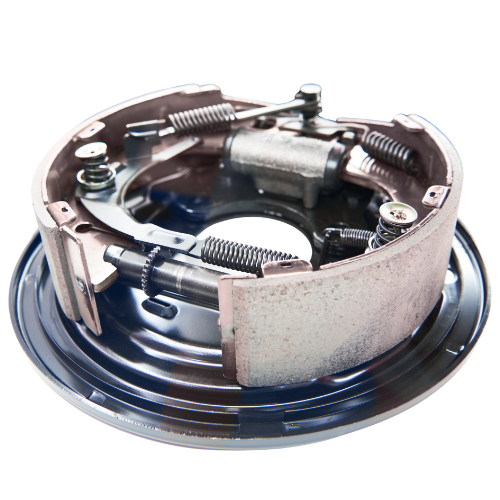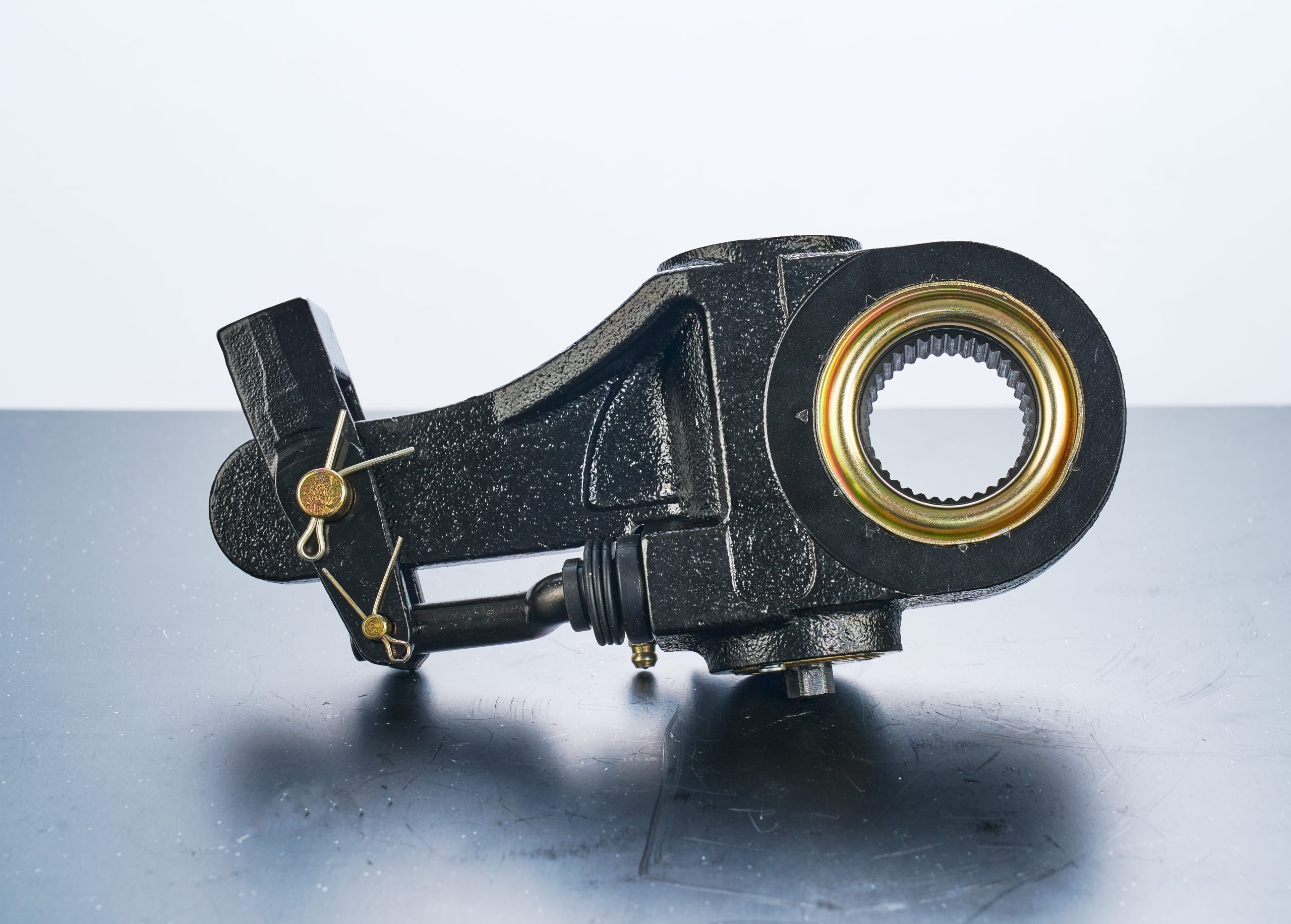Explore the four key components that make up a truck’s brake system—engineered to ensure safe, reliable, and powerful stopping performance on every road.

When slack adjusters begin to fail, the entire braking system can be compromised—leading to poor performance, safety issues, and expensive repairs.
While not as immediately visible as brake calipers or tyres, slack adjusters are just as vital to keeping trucks and trailers safe on the road. Knowing the early warning signs and taking simple preventive steps can save time, money, and possibly lives.

Slack adjusters are mechanical links between the brake chamber and the S-cam in drum brake systems, commonly used in vehicles with air brakes. Their main job is to maintain the correct amount of slack or play in the brake linkage.
If this slack becomes too much, your brakes may not engage properly. If it’s too tight, the brakes could drag or overheat. In either case, the effectiveness of the system drops—especially when carrying heavy loads or driving in challenging conditions.
It’s not always obvious when a slack adjuster is starting to fail, but there are a few signs that can serve as red flags. Paying attention to these can help prevent major brake issues down the line.
1. Uneven Braking or Pulling to One Side
If your vehicle pulls to one side during braking, it may indicate that one or more slack adjusters aren’t doing their job. This imbalance can lead to premature wear on brake shoes and potential safety hazards, particularly at high speeds or in wet weather.
2. Excessive Brake Pedal Travel
If it feels like the brake pedal has to travel further than usual before the brakes engage, slack adjusters may be misaligned or worn out. This delay can impact stopping distances and response time—especially in vehicles with heavy-duty air brake systems.
3. Inconsistent Brake Performance
You may notice that your brakes work well some days and feel “off” on others. Inconsistent performance is a sign that the slack adjusters may be fluctuating in how they control tension and pressure across the system.
4. Noisy or Squealing Brakes
While noise is often associated with worn brake shoes or pads, it can also stem from a failing slack adjuster. If the adjuster isn’t maintaining proper alignment, it can cause strain or uneven contact between the brake components.
5. Visible Wear or Damage
On inspection, if slack adjusters appear bent, overly rusted, or misaligned, they’re likely compromised. A visual check during routine service can catch issues before they affect performance.
When slack adjusters fail, they affect not just one part but the entire braking system. Brake chambers may be forced to overextend, and brake shoes may wear unevenly or too quickly. In worst-case scenarios, the brakes may not engage at all—posing a serious risk on the road.
Drivers and fleet managers should treat slack adjuster maintenance with the same importance as tyre pressure checks or oil changes. A small part like this can have wide-reaching effects.
Keeping slack adjusters in good shape doesn’t require complex tools or specialised knowledge. With a few habits and inspections, you can stay ahead of problems.
1. Include Slack Adjusters in Routine Checks
Whether it’s a pre-trip inspection or part of scheduled maintenance, slack adjusters should be examined regularly. Look for corrosion, loose connections, and any changes in how they move or sit.
2. Monitor Brake System Balance
Make sure all brakes are adjusted evenly. If one set is doing more work than the others, it puts extra pressure on that axle’s slack adjuster—and reduces overall brake efficiency.
3. Replace When Needed, Not Just When Failed
Like brake shoes or calipers, slack adjusters have a lifespan. If they’re showing signs of age or aren’t responding well to adjustments, it may be time to replace them. Don’t wait for a full failure to act.
4. Use the Right Components
Always use manufacturer-approved or equivalent slack adjusters, brake chambers, and associated parts. A mismatched system can lead to irregular wear or poor performance.
5. Stay Aware of Driving Conditions
Frequent stop-and-go traffic, heavy loads, or hilly terrain put extra strain on the braking system. Drivers in these conditions should inspect their slack adjusters more often and take preventive action sooner.
When slack adjusters aren’t functioning properly, it’s not just the brakes that suffer. Other components feel the strain too.
An issue with slack adjusters might start small, but it never stays that way for long.
Slack adjusters are a crucial part of a safe and reliable braking system, especially in commercial vehicles that rely on air brakes. By understanding the early signs of failure and following simple preventive measures, drivers and operators can avoid expensive repairs, downtime, and road hazards.
Maintaining the health of your slack adjusters helps preserve other vital parts like brake chambers and brake shoes, and ensures your vehicle remains compliant and ready for the road. When in doubt, a quick inspection could make all the difference.
Do all vehicles with air brakes have slack adjusters?
Yes, most drum brake systems in air-braked vehicles use slack adjusters to manage brake pad distance and tension.
How often should slack adjusters be inspected?
They should be checked during every routine brake inspection and before long trips—especially in commercial or heavy-load vehicles.
Can you adjust slack adjusters manually?
Some models are designed for manual adjustment, while others are automatic. If unsure, it’s best to check with a technician or refer to the vehicle’s service guide.
What happens if I ignore slack adjuster wear?
Ignoring slack adjuster issues can lead to reduced braking efficiency, uneven wear, and increased stopping distances—all of which are safety hazards.
Is replacing slack adjusters expensive?
Compared to the cost of full brake system repairs or accident-related damages, slack adjuster replacement is relatively affordable and often a worthwhile investment.